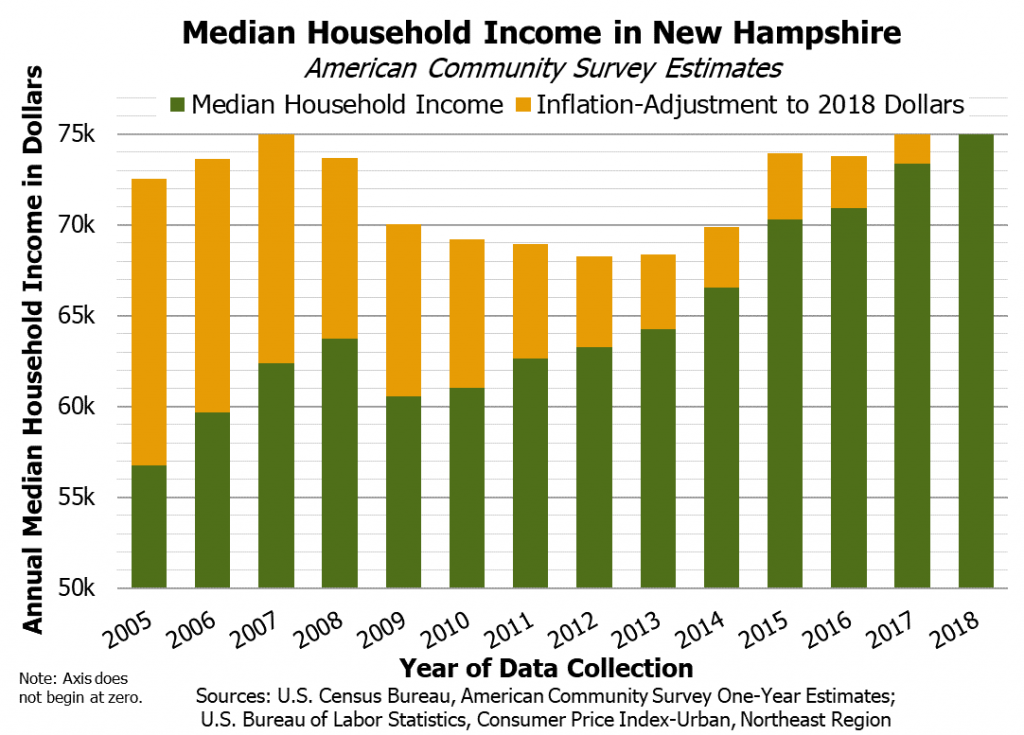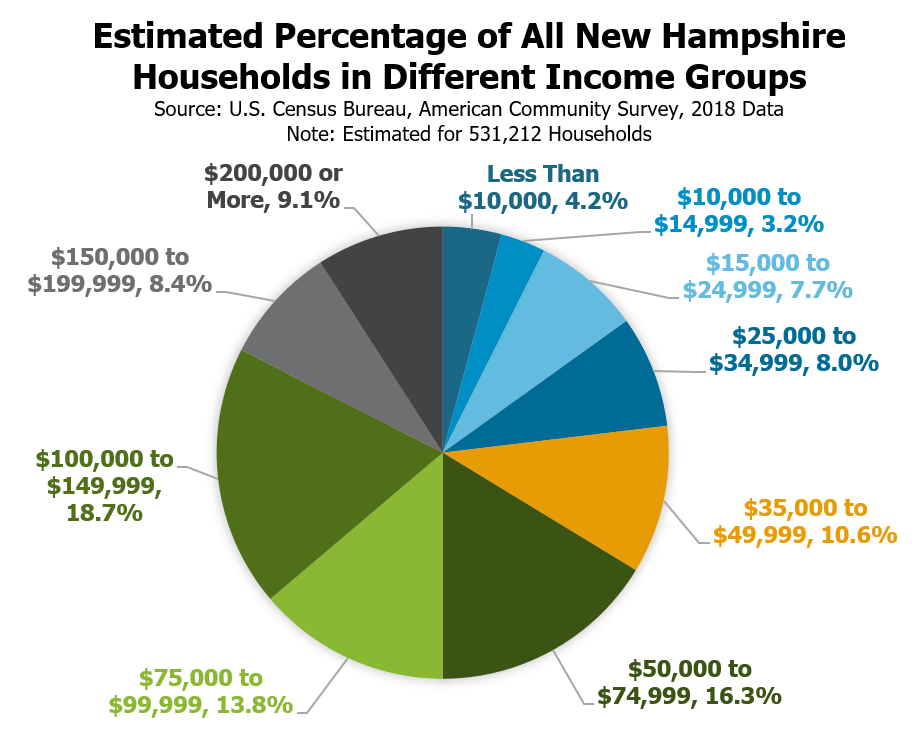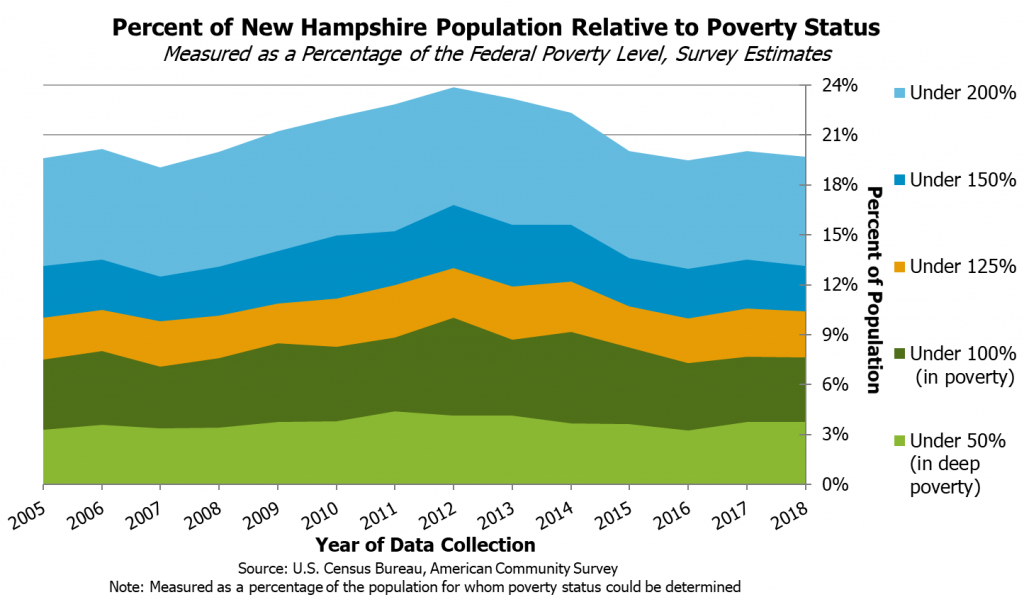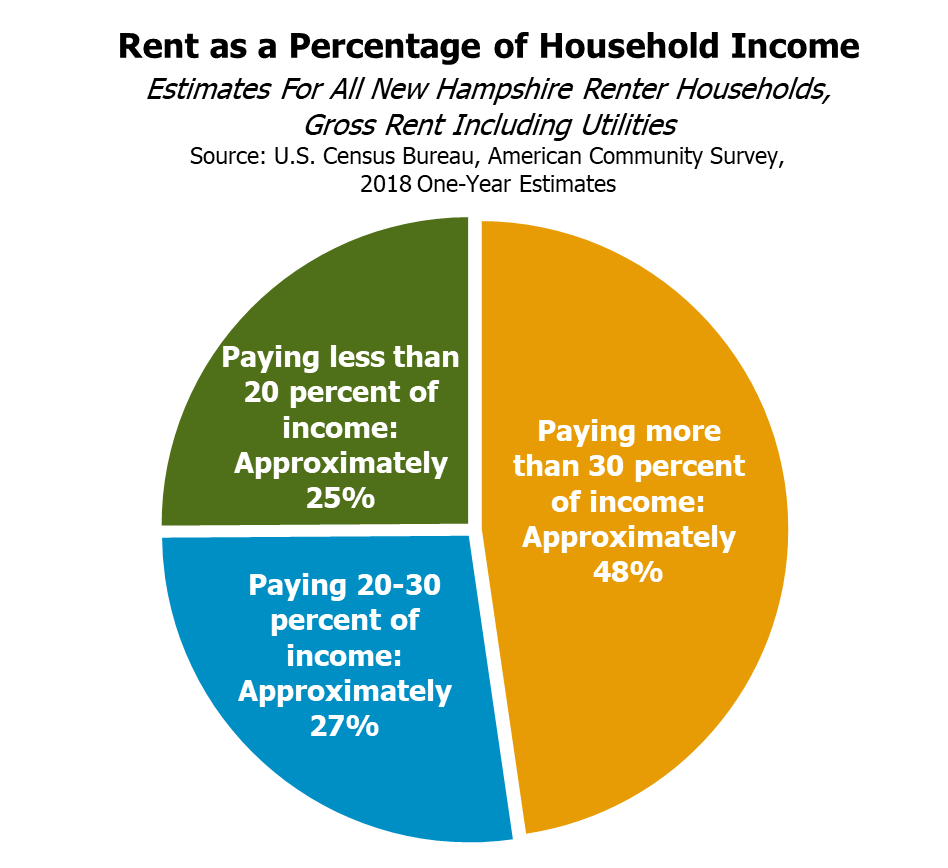The U.S. Census Bureau American Community Survey data released September 26, 2019 provide estimates of population characteristics based on data collected in surveys conducted throughout 2018. The survey data provide year-to-year comparisons of key indicators affecting the lives of Granite Staters. All survey data are estimates for New Hampshire from the U.S. Census Bureau.
Household Income
Median household income, estimated at $74,991, remained about the same for the data collected in 2018 as the 2017 data. While this figure is a nominal high, adjusting for inflation shows New Hampshire’s median household income took many years to return the levels seen in 2007, prior to the last recession, and is quite similar to last year. These data suggest economic growth has kept New Hampshire’s median household income on par with inflation in the last year, but not outpaced it significantly. Relative to other states and the District of Columbia, New Hampshire has about the eighth-highest median household income, although uncertainty in the survey data renders the estimate statistically indistinguishable from Connecticut (#6), California (#7), Washington (#9), and Alaska (#10). About one in three Granite State households had less than $50,000 per year in income, and more than one in five had less than $35,000 per year. Around 23,000 households had less than $10,000 in income. Based on a key metric used by the U.S. Census Bureau, New Hampshire was one of nine states in which income inequality between households increased between the 2017 and 2018 data collections.
Poverty
New Hampshire’s poverty rate remained about the same, with an estimated 7.6 percent in the 2018 data and 7.7 percent in the 2017 data, which are both near to pre-recession levels. The poverty rate for those under 18 years old also remained virtually the same, at 10.6 percent in 2018 relative to 10.3 percent in 2017, after increasing from 7.9 percent in the 2016 data. The poverty rate for those aged 65 and older was also statistically unchanged, estimated at 5.5 percent for 2018 relative to the 5.8 percent in the 2017 data. The lack of changes in these poverty rates suggests economic growth has not lifted purchasing power throughout the state economy, as poverty rates have not outpaced inflation. The poverty-level income threshold for 2018 is $13,064 for an individual less than 65 years old and $20,212 for a family of three with one child. New Hampshire’s overall poverty rate was the lowest of any state in the country. About 100,000 Granite Staters lived in poverty, the same amount as estimated by the 2017 data and approximately equivalent of the estimated 2018 populations of Berlin, Exeter, Keene, Lebanon, Milford, and Portsmouth combined. Around 49,000 people lived at less than half of poverty-level income, while an estimated 259,000 people, or approximately one in five residents, lived at less than twice poverty-level incomes in New Hampshire.
Housing Costs
For households that are renters, the Census Bureau measures gross rent, including utilities, as a percentage of household income. Gross rent exceeded 30 percent of household income, a common metric for affordability, for about 48 percent of all renter households.
Health Coverage
The percentage of Granite Staters with health coverage remained about the same at 94.3 percent, higher than levels in 2015 and before the implementation of the federal Affordable Care Act and the expansion of Medicaid in New Hampshire. Approximately 77,000 Granite Staters, or about one in twenty, lacked health insurance coverage in the 2018 data.
For links to U.S. Census Bureau sources and more information, see NHFPI’s Common Cents post New Census Bureau Data Show NH Incomes, Poverty Rates Holding Steady.





